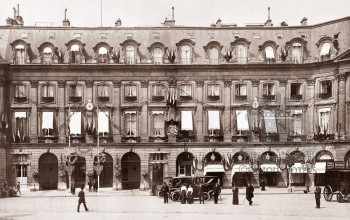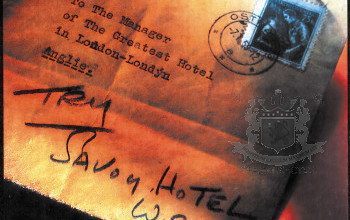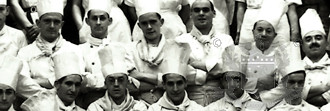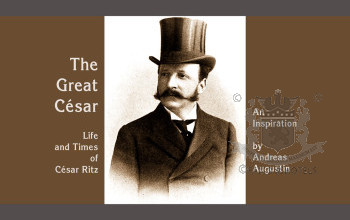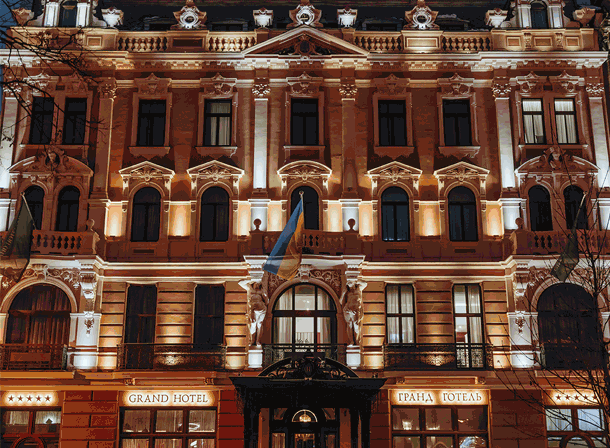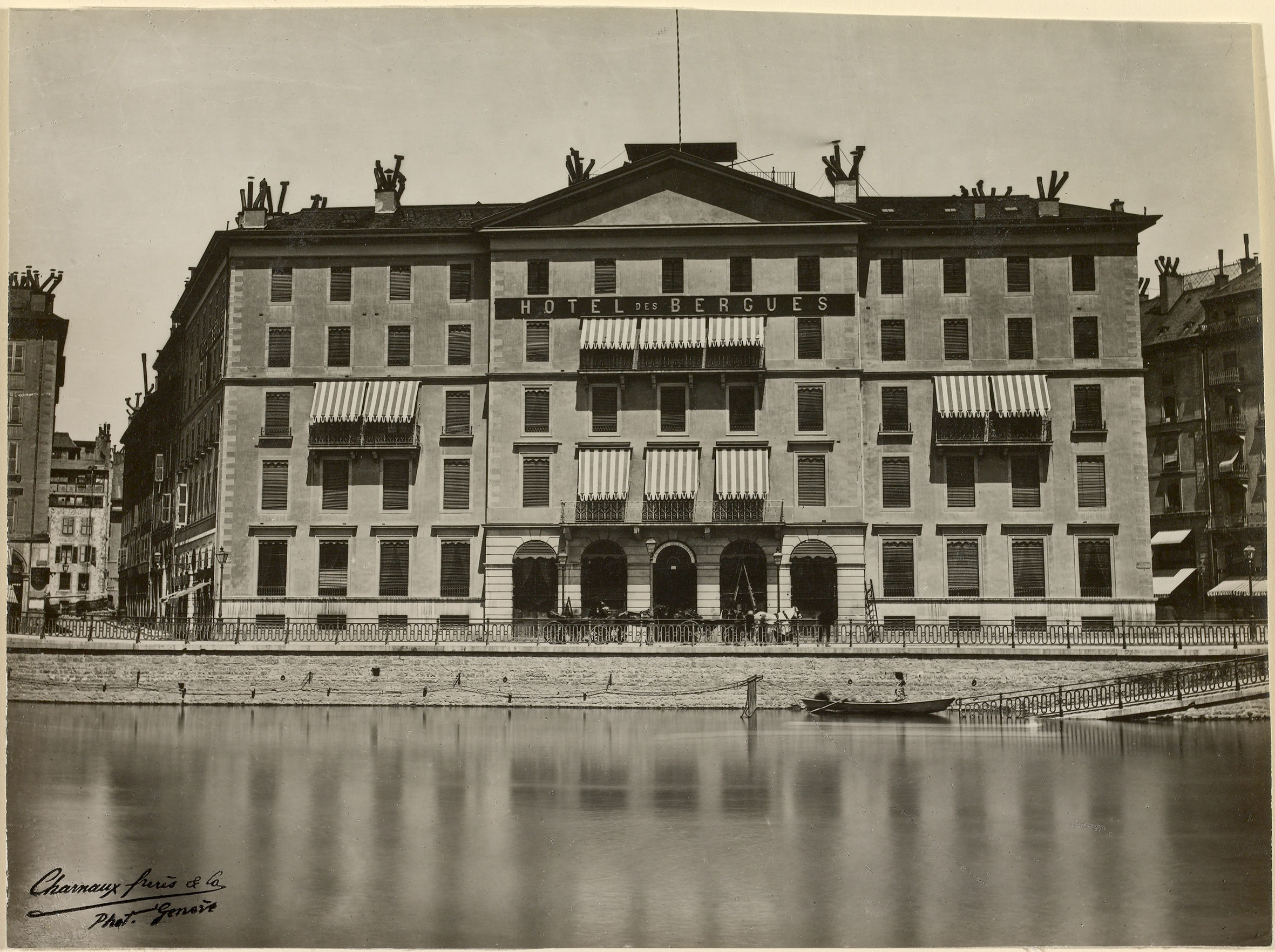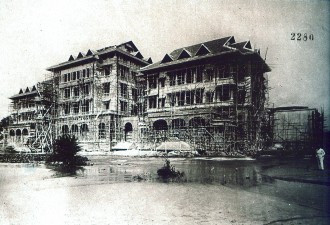The Savoy London - the making of
( words)
Mr Ritz, You are Fired!
Andreas Augustin
In 2000, Michael Shepherd, General Manager of The Savoy at the time, was sitting on a very old history book about The Savoy. It had been written by Stanley Jackson in 1964. He knew that we update our books every year - he needed a fast moving publishing partner and in fact, he needed a professional history research team. He called us. I moved in the A team. There was Andrew Williamson, the historian, a graduate from Oxford University. Rupert Tenison, the photographer with a great London coffee table book on his record. I packed my suitcases and flew to London. We started our job. We received contributions made by the 'old guard' of The Savoy, among them Ramón Pajares, Duncan Palmer, Willy Bauer, Herbert Striessnig, Dodie Cotter, Rudolf Schreiner, Julian Payne and Derek Picot (read his Charlie Chaplin story at the end of this report). Geraldine McKenna, at the time the Director of Marketing and Sales of The Savoy Group, was of great help. Associations offered their help, among them the Savoy Gastronomes (Virginia Masser) and the Savoy Society (Andrew Phillips).
The Savoy is a high society adventure park, disguised as a hotel. In the 1880s, theatre impresario Richard D'Oyly Carte brought the two giants of musical entertainment, Gilbert and Sullivan together and managed them to fame and fortune. He built an Opera House, The Savoy Theatre and then The Savoy Hotel. With hotelier César Ritz he brought professional help. With him came Auguste Escoffier to London, introducing haute cuisine to a whole nation blessed by culinary ignorance. The Savoy Hotel was the first link in a group of luxury hotels. Richard D'Oyly Carte and his son Rupert, George Reeves-Smith, Sir Hugh Wontner and Ramón Pajares were the legendary names that managed The Savoy Group. Its head chefs – from Escoffier to Latry to Edelmann – made The Savoy a temple for connoisseurs. Over 100 years later we were introduced to a wooden cat called Kaspar, the hotel's most-frequent diner (right). Whenever 13 people dine, Kaspar is called upon to even up the number. He duly takes his place around the table where, a napkin tied around his neck, he is served the full complement of courses. We met the members of the 'Other Club', founded by Winston Churchill, still meeting at the hotel. At night the ghost of Oscar Wilde seemed to appear. The playwright had a gay old time at the hotel in days when the word gay still stood for lighthearted and carefree, characterising cheerfulness or pleasure. The Thesaurus also says: brightly colored; showy; brilliant. In Wilde's (left) case the modern meaning 'homosexuality' would have been all right, too. Claud Monet had painted famous works from the balcony of his suite, Whistler had left us an etching of the construction work of the hotel and in the 1890s the company had acquired the most famous restaurant of Paris only to seize Joseph, the legendary headwaiter who filled pages of anecdotes of our book to come. It is that sort of hotel.
Finally we touched the secret heart of the house. The Savoy not only had a wonderful PR department headed by Pam Carter. It also had its own archives. They were in a dark room for a hundred years, a room that hasn't been dusted in decades. The shelves are about 3 metres high (30ft). They are overlooked (or better: looked at) by Susan Scott, a historian. Her office is on the other side of the corridor. One Monday morning, Susan handed us the keys to the archive room. I didn't notice the hint of an amused smile in the upper left corner of her sealed lips. That much about our admirable work in famous hotels. Every morning I walked in my oldest jeans down the backstairs to the executive floor in the basement of the hotel, where the archive room was. I unlocked the door and took my last deep breath of fresh air for hours to come. The computer and the scanner stood on a small table at the far end of the room. Day and night a small lamp and faded neon lamps barely lit the room. It was a spooky scene. Opening the first boxes made it clear: It's all there. They contained the first letter of complaint, a pair of spectacles of a general manager from 1899, the menus of all New Years Balls – and everything in between. One day we stumbled over the Ritz files. Ah! Cesar Ritz, the fabled hotelier. He was the first general manager of The Savoy. Here his handwriting and that of his wife Marie Louise (below). There his signature. And letters by Auguste Escoffier. We slowly pushed open the gates to the secret past of hospitality industry.
 But what was that? Cesar Ritz (picture) had made The Savoy London's leading hotel. His employer, impresario Richard D'Oyly Carte, allowed his Swiss manager to go even further. Once Ritz had conquered London Society, he began casting a covetous eye around Europe in search of the next challenge. His gaze fell on two properties. One was the unfinished Grand Hotel in Rome, whose original promoter, Mr Cavallini, had run out of funds; the other was London's elegant Claridge's. At that point the filed material turned hot. Secret reports surfaced. And suddenly we found the note of dismissal delivered to Messrs Ritz, his assistant Echenard and Escoffier on 7 March 1898. The text was uncompromising: 'By a resolution passed this morning you have been dismissed from the service of the Hotel for, among other serious reasons, gross negligence and breaches of duty and mismanagement. I am also directed to request that you will be good enough to leave the Hotel at once.' Ritz had been fired by The Savoy! That was a surprise even for the seasoned researcher. How embarrassing for Ritz. What had gone wrong? Meticulously we combed the boxes for all the details. One by one the story unfolded. From the acquisition and opening of the Grand Hotel in Rome and Claridge's to the 'The Savoy Hotel Mystery', as titled in The Star. On 8 March 1898, The Star wrote: 'During the last 24-hours The Savoy Hotel has been the scene of disturbances which in a South American Republic would be dignified by the name of revolution. Three managers have been dismissed and 16 fiery French and Swiss cooks (some of them took their long knives and placed themselves in a position of defiance) have been bundled out by the aid of a strong force of Metropolitan police.'
But what was that? Cesar Ritz (picture) had made The Savoy London's leading hotel. His employer, impresario Richard D'Oyly Carte, allowed his Swiss manager to go even further. Once Ritz had conquered London Society, he began casting a covetous eye around Europe in search of the next challenge. His gaze fell on two properties. One was the unfinished Grand Hotel in Rome, whose original promoter, Mr Cavallini, had run out of funds; the other was London's elegant Claridge's. At that point the filed material turned hot. Secret reports surfaced. And suddenly we found the note of dismissal delivered to Messrs Ritz, his assistant Echenard and Escoffier on 7 March 1898. The text was uncompromising: 'By a resolution passed this morning you have been dismissed from the service of the Hotel for, among other serious reasons, gross negligence and breaches of duty and mismanagement. I am also directed to request that you will be good enough to leave the Hotel at once.' Ritz had been fired by The Savoy! That was a surprise even for the seasoned researcher. How embarrassing for Ritz. What had gone wrong? Meticulously we combed the boxes for all the details. One by one the story unfolded. From the acquisition and opening of the Grand Hotel in Rome and Claridge's to the 'The Savoy Hotel Mystery', as titled in The Star. On 8 March 1898, The Star wrote: 'During the last 24-hours The Savoy Hotel has been the scene of disturbances which in a South American Republic would be dignified by the name of revolution. Three managers have been dismissed and 16 fiery French and Swiss cooks (some of them took their long knives and placed themselves in a position of defiance) have been bundled out by the aid of a strong force of Metropolitan police.'
Taking a deep breath, we returned to the surface of the Savoy. Upstairs, at the halls and the lobby there was business as usual. A group of young actors celebrated the opening night of a movie called "Harry Potter". We took a shower, put on the Ritz (that seemed still all right), and sipped an aperitif at Salim Khoury's American Bar, then still with Peter Dorelli behind the counter. Later we dined at the restaurant, where Escoffier had served Nellie Melba and Sarah Bernhardt. Now that we knew what had happened here a hundred years ago, the glamour of the days of Ritz appeared in another light. Somehow, the once so familiar waiter looked at me in a funny way, brandishing a long, thin knife, its whirling blade reflecting the soft candle light of the surrounding tables. Did they sense that we were about to reveal a sensation, or rather, a scandal? Would our little secret remain with me and my dead body? With a swift movement he bent over me, with his left hand pulling a trolley from my back to the side of the table: 'Salmon, three slices, paperthin, as usual, Mr Augustin?' 'Yes,' I whispered, relieved, and reached for my champagne. P.S.: Of course we treated the case with the necessary respect for the great hotelier. Read the results of our research, the complete Ritz chapter from our book.


